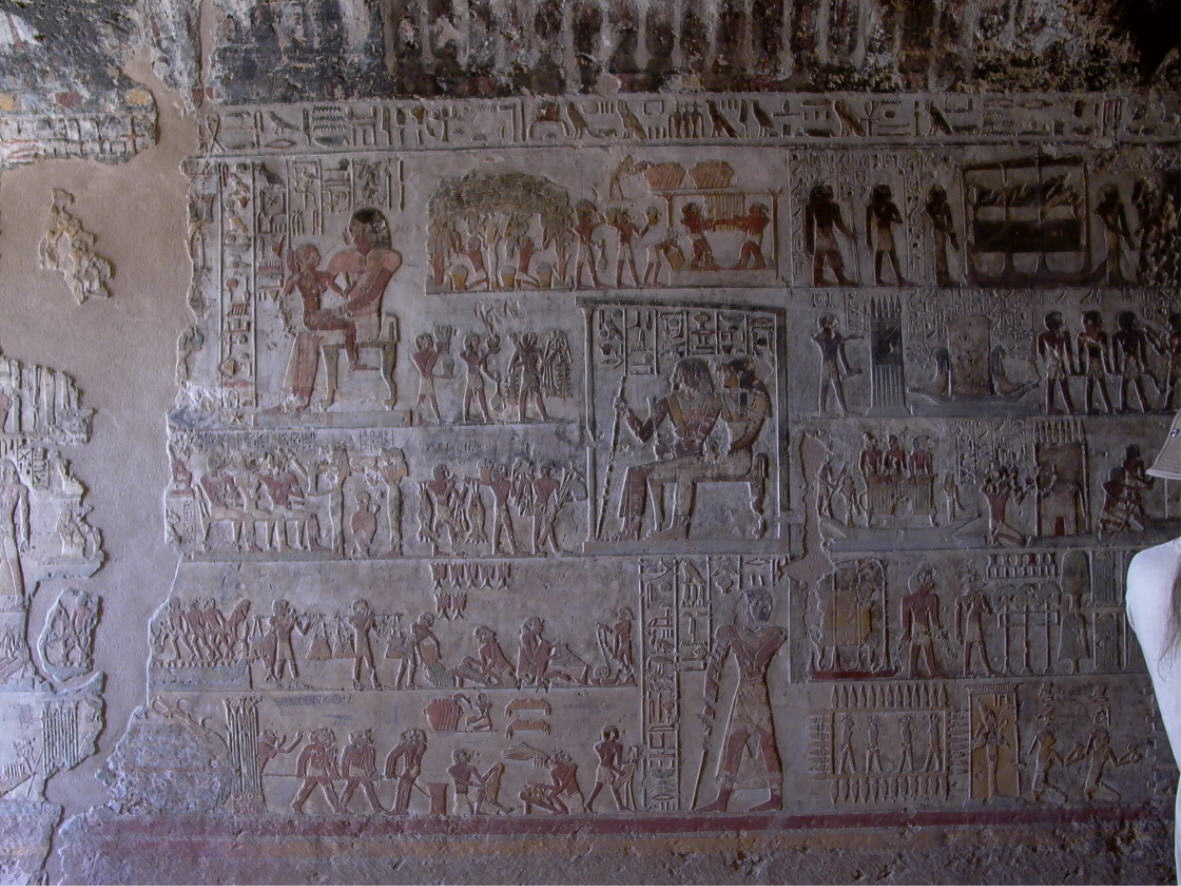|
Maat-ka-Ra Hatshepsut |
last update: 09.06.2009 | |
|
Wadjmose and Amenmose |
| Occasionally, the "Great Royal Wife" Ahmose is also listed as the mother of the royal sons Wadjmose and Amenmose who both are depicted in the tomb of Paherj, Elkab, and mentioned in a few inscriptions (e.g. Sethe, Urk. IV, 108-110). According to Ratiť (1979, S. 24; citing Daressy) Ahmose was perhaps the mother of several other princes named Binpu, Ramose, Nekenkhal, Aahmosis. |
| Wadjmose is testified by a small temple (located directly south of the Ramesseum) and his depiction in the tomb of Paheri at Elkab (see photo below). Since Thutmosis II has installed in this small temple a statue dedicated for his own mother, Mutnofret (Cairo 572; see Family), it is assumed that Mutnofret was also the mother Wadjmose. If so, Wadjmose and Thutmosis II would have been brothers. |
| However, Wadjmose disappeared from the records already a few years after the accession of Thutmosis I, most likely he died in infancy. |

| Tomb of Paheri at Elkab. Above left the Lord of Elkab, Paheri, is depicted as the tutor of royal prince Wadjmose who is shown sitting on his knees (photo: Author) |
|
The potential successor of Thutmosis I, prince Amenmose, was apparently
testified by the following records:
1. with year 4 he is mentioned in the inscription on the fragments of a naos (Louvre E 8074) which based on its finding at Giza most likely had been dedicated to the great Sphinx. The inscription calls him "..the eldest son of the king, the Commander in Chief, ..." (Sethe, Urk. IV, 91), 2. he is depicted on the east-wall of the tomb of Paheri together with Wadjmose receiving offerings, 3. a scarab which is today in the Petrie-Museum (London, UC11930) shows on the bottom the inscription "sA njswt Imn-ms". |
|
Meanwhile, these records are regarded doubtful (Hohneck, 2006):
1. for different reasons the naos is regarded as a fake, 2. Paheri had an own son named Amenmose who is shown in prominent place of the tomb celebrating the funerary offerings for his parents. Possibly this Amenmose was a "foster brother" of Wadjmose. On the other hand, Amenmose wos is shown sitting behind Wadjmose is also called "Son of the King", 3. although no other son of a king named Amenmose is known, it is not possible to assign this scarab to the son Thutmosis I. with certainty because there is no testified information about the origin of this piece. |
| In opinion of Hohneck the scarab as well as the naos do not prove for the existence of a royal prince called Amenmose. Only the representation in the tomb of Paheri argues with a certain probability for the existence of this royal son under Thutmosis I. |
| The is no information about the mother of Amenmose. |